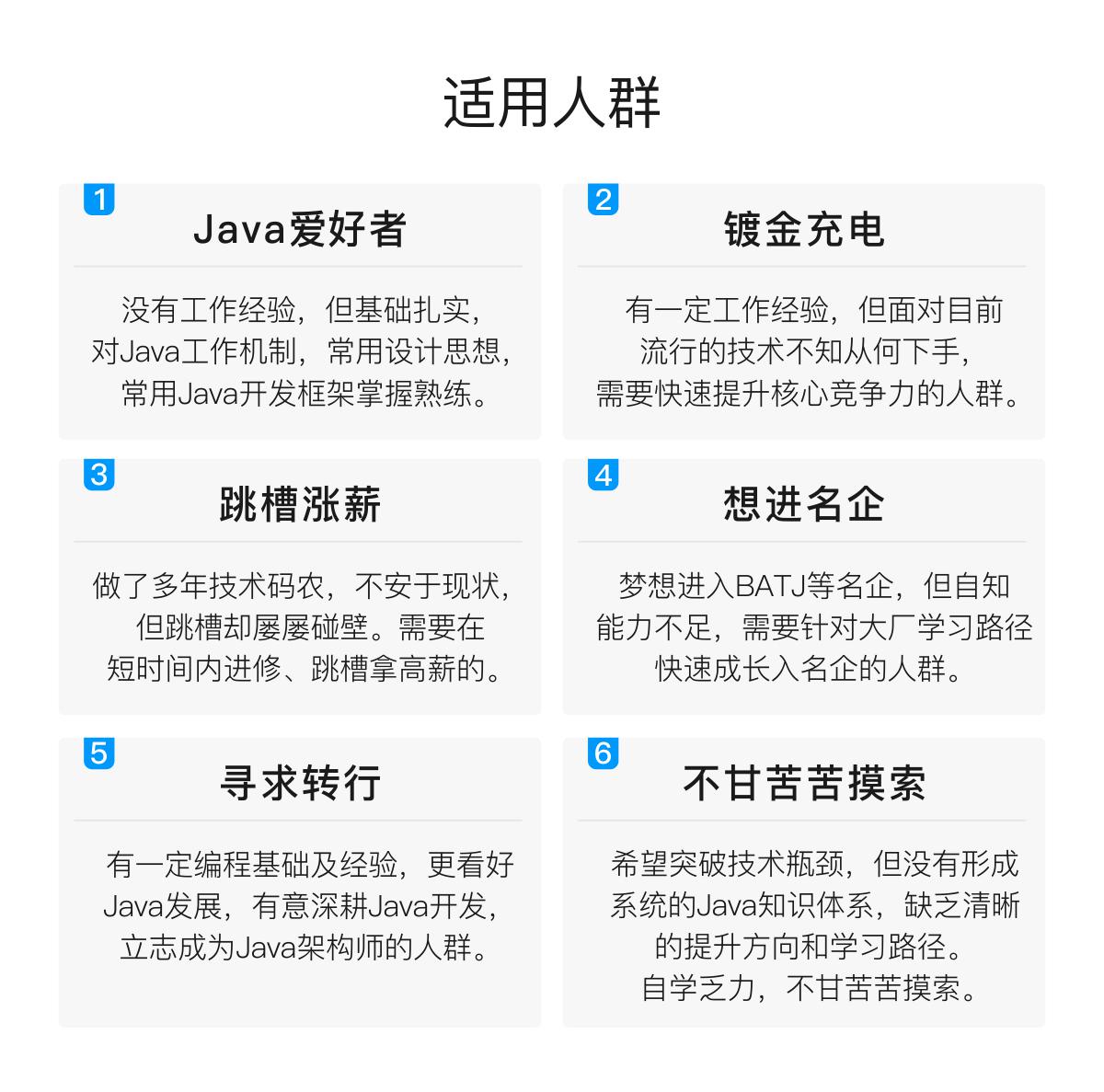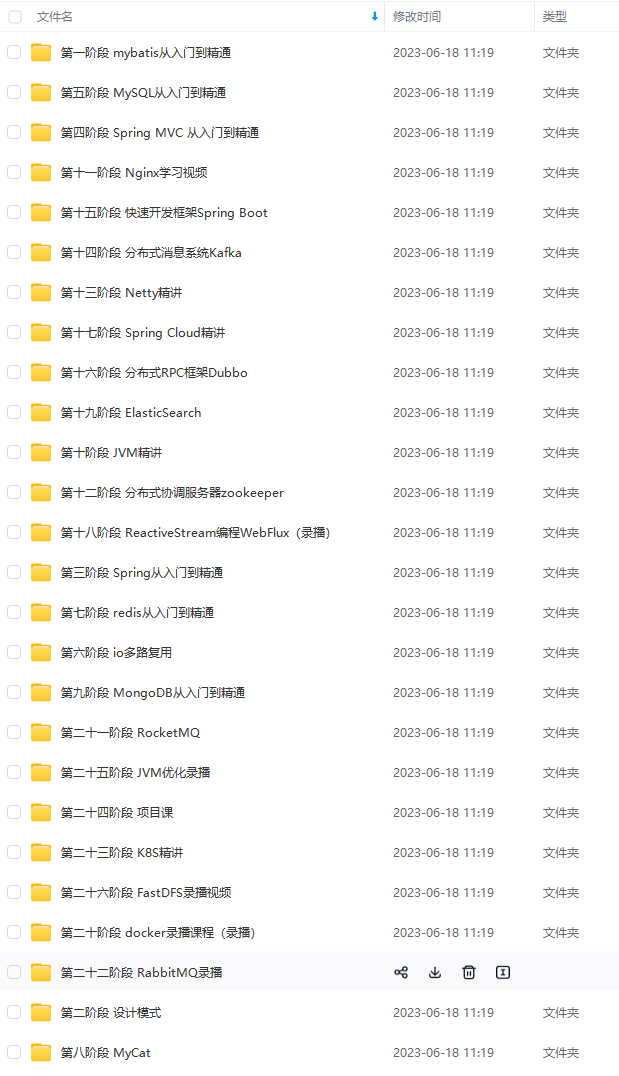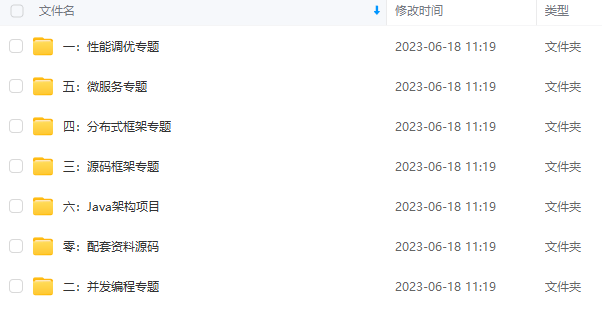AuthenticatingSecurityManager
AuthenticatingSecurityManager是负责认证管理的,所以前面Shiro图的认证管理器就是在这里,里面只有一个熟悉感,就是认证管理器Authenticator。

可以看到,认证器默认的引用类型是ModularRealmAuthenticator。
AuthorizingSecurityManager
AuthorizingSecurityManager是负责授权管理的,也就是前面的授权器所在类,里面也是只有一个属性,就是授权器Authorizer

也是很容易看到,授权器的默认实现方式为ModularRealmAuthorizer。
SessionSecurityManager
SessionSecurityManager是负责会话管理的,里面也只有一个会话管理器属性,默认为DefaultSessionManager

DefaultSecurityManager
拥有上面提到的所有SecurityManager的功能,具体的SecurityManager.login方法就是在这里实现的。
public Subject login(Subject subject, AuthenticationToken token) throws AuthenticationException {
//该变量存储认证信息
AuthenticationInfo info;
try {
//获取认证信息
info = this.authenticate(token);
} catch (AuthenticationException var7) {
//下面的操作都是由获取认证信息步骤引起的
//要返回上一步,看认证信息步骤
AuthenticationException ae = var7;
try {
this.onFailedLogin(token, ae, subject);
} catch (Exception var6) {
if (log.isInfoEnabled()) {
log.info(“onFailedLogin method threw an exception. Logging and propagating original AuthenticationException.”, var6);
}
}
throw var7;
}
//根据认证信息和token创建出Subject对象,所以要先管抓住认证信息怎么拿
Subject loggedIn = this.createSubject(token, info, subject);
this.onSuccessfulLogin(token, info, loggedIn);
return loggedIn;
}
DefaultSecurityManager获取认证信息
来到这一步,我们首先要去认识AuthenticationInfo这个对象,因为后面的比较都与它相关。
AuthenticationInfo对象
记得Realm中,在认证方法中,我们返回的是SimpleAuthenticationInfo这个对象的,这个对象跟AuthenticationInfo接口相关,所以我们从这里入手

我们可以看到这个接口,被3个子接口继承,而这三个子接口,总体上被2个类去实现,一个是SimpleAccount,另一个是SimpleAuthenticationInfo。
我们先来认识一下这四个接口吧
AuthenticationInfo

里面只有两个方法,分别是获取认证信息和密码的。
MergableAuthenticationInfo

可以看到他新增了一个合并认证信息的功能(认证信息如何进行合并的呢?下面再说)
Account

Account没有新增抽象方法,但还多继承了一个AuthorizationInfo(用来授权的,以后再说)
SaltedAuthenticationInfo

里面增加了一个获取盐值的方法(ByteSouce类型)。
认识SimpleAuthenticationInfo

从上图源码,可以看到,SimpleAuthenticationInfo实现了MergableAuthenticationInfo和SaltedAuthenticationInfo接口,所以他就有这两个接口的所有方法,并且有三个属性
-
PrincipalCollection principals 认证信息集合
-
credentials:密码
-
credentialsSalt:盐值
我们从构造方法开始入手

可以看到里面包括无参构造,总共有5个构造方法,盐值(credentialsSalt可以不注入)和credentials(密码)都是注入的,而principals是通过构造方法出来的,创建一个SimplePrincipalsCollection
SimplePrincipalsCollection
下面我们进入SimplePrincipalsCollection看看其到底是什么架构,
public class SimplePrincipalCollection implements MutablePrincipalCollection {
//序列化id,可以进行序列,然后放到内存中
private static final long serialVersionUID = -6305224034025797558L;
//所有realm的认证信息,一个map集合,键是String类型,Value是Set类型
private Map<String, Set> realmPrincipals;
//内存中的对象反序列化回来变成字符串,transizent是让这个属性不被序列化
private transient String cachedToString;
public SimplePrincipalCollection() {
}
/**
-
构造方法都是使用addAll或者add方法来进行初始化的
-
所以下面具体看一下这两个方法
**/
public SimplePrincipalCollection(Object principal, String realmName) {
if (principal instanceof Collection) {
this.addAll((Collection)principal, realmName);
} else {
this.add(principal, realmName);
}
}
public SimplePrincipalCollection(Collection principals, String realmName) {
this.addAll(principals, realmName);
}
public SimplePrincipalCollection(PrincipalCollection principals) {
this.addAll(principals);
}
//。。。。
}
add方法
/**
- add方法源码
**/
public void add(Object principal, String realmName) {
//如果realmName或者principal为空,就抛出异常
if (realmName == null) {
throw new IllegalArgumentException(“realmName argument cannot be null.”);
} else if (principal == null) {
throw new IllegalArgumentException(“principal argument cannot be null.”);
}
//不为空,就初始化cachedToString属性
//然后调用getPrincipalslazy方法
else {
this.cachedToString = null;
//拿到realmName对应的set集合,存放principal信息
this.getPrincipalsLazy(realmName).add(principal);
}
}
/**
- getPrincipalsLazy方法具体实现
**/
protected Collection getPrincipalsLazy(String realmName) {
//我们可以看到,其实这个方法是用来初始化relamPrincipals的
//如果是第一次加入,先对realmPrincipals进行初始化
if (this.realmPrincipals == null) {
//第一次定义为是一个LinkedHashMap
//这个LinkedHashMap,键是realmName,值是一个set集合
this.realmPrincipals = new LinkedHashMap();
}
//通过键值对方式,获取realmPrincipals的对应realmName的set集合
Set principals = (Set)this.realmPrincipals.get(realmName);
//如果没有,证明该Realm是第一次存放认证信息,还没有进行与其他Realm的信息合并
if (principals == null) {
//set集合具体是一个LinkedHashSet
principals = new LinkedHashSet();
//往realmPrincipals中放入这realmName为key,principals为值的键值对
this.realmPrincipals.put(realmName, principals);
}
//如果已经有了,证明已经合并过了
//返回realmName对应的set集合
return (Collection)principals;
}
所以SimplePrincipalCollection的底层是一个LinkedHashMap,以RealmName为键,是一个字符串对象,值对应的是一个LinkedHashSet集合,里面存放的就是principal(账号信息)

我们可以看到key是Realm的全限定符,value里面存的就是是一个以账号组成的LinkedHashSet。
为什么要用LinkedHashSet呢?一个Realm里面还会存在多个账号的吗?。

下面回到我们的认证过程
DefaultSecurityManager调用自身的authenticate方法发来获取认证信息,该方法实现具体如下

点进去,发现Authenticator是一个接口,而且拥有两个实现类,那么具体是哪一个呢?

这里,我们必须返回到上一层看一下DefaultSecurityManager的authenticator是哪一个,去看看到底调用的是哪一个实现类,前面已经提到过,DefaultSecurityManager的authenticator(认证器)是AuthenticatingSecurityManager的认证器,所以默认的类型是ModularRealmAuthenticator。

我们可以看到ModularRealmAuthenticator是继承AbstractAuthenticator的,而且并没有authenticate方法的实现,所以可以断定,authenticate的实现肯定在父类AbstractAuthenticator中

在里面,很轻易找到了对应具体实现方法
public final AuthenticationInfo authenticate(AuthenticationToken token) throws AuthenticationException {
//如果token不存在,抛出异常
if (token == null) {
throw new IllegalArgumentException(“Method argument (authentication token) cannot be null.”);
} else {
log.trace(“Authentication attempt received for token [{}]”, token);
//该变量用于记录认证信息
AuthenticationInfo info;
try {
//调用自身的doAuthenticate方法获取认证信息
info = this.doAuthenticate(token);
if (info == null) {
String msg = “No account information found for authentication token [” + token + "] by this " + “Authenticator instance. Please check that it is configured correctly.”;
throw new AuthenticationException(msg);
}
} catch (Throwable var8) {
AuthenticationException ae = null;
if (var8 instanceof AuthenticationException) {
ae = (AuthenticationException)var8;
}
if (ae == null) {
String msg = “Authentication failed for token submission [” + token + "]. Possible unexpected " + “error? (Typical or expected login exceptions should extend from AuthenticationException).”;
ae = new AuthenticationException(msg, var8);
if (log.isWarnEnabled()) {
log.warn(msg, var8);
}
}
try {
this.notifyFailure(token, ae);
} catch (Throwable var7) {
if (log.isWarnEnabled()) {
String msg = “Unable to send notification for failed authentication attempt - listener error?. Please check your AuthenticationListener implementation(s). Logging sending exception and propagating original AuthenticationException instead…”;
log.warn(msg, var7);
}
}
throw ae;
}
log.debug(“Authentication successful for token [{}]. Returned account [{}]”, token, info);
this.notifySuccess(token, info);
return info;
}
}
我们可以看到,这里是调用了自身的doAuthenticate方法去获取认证信息的,所以,下面就去看看这个方法
protected abstract AuthenticationInfo doAuthenticate(AuthenticationToken var1) throws AuthenticationException;
这个方法是一个抽象方法,所以肯定是由AbstractAuthenticator的子类ModularRealmAuthenticator去实现的

具体实现如下
protected AuthenticationInfo doAuthenticate(AuthenticationToken authenticationToken) throws AuthenticationException {
//判断是否有Realm装配
this.assertRealmsConfigured();
//获取所有Realm
Collection realms = this.getRealms();
//如果只有一个Realm,就只调用那个Realm(通过迭代器获取)
//如果有多个Realm,就多个执行
return realms.size() == 1 ? this.doSingleRealmAuthentication((Realm)realms.iterator().next(), authenticationToken) : this.doMultiRealmAuthentication(realms, authenticationToken);
}
好了,现在弄清楚认证方法是怎样的了,具体的规则如下
-
如果只有一个Realm,就只调用那一个Realm
-
如果有多个Realm,都调用。
下面我们进入到Realm认证中
ModularRealmAuthenticator的doSingleRealmAuthentication
这是源码
protected AuthenticationInfo doSingleRealmAuthentication(Realm realm, AuthenticationToken token) {
//token类型不支持,抛出错误
if (!realm.supports(token)) {
String msg = “Realm [” + realm + “] does not support authentication token [” + token + "]. Please ensure that the appropriate Realm implementation is " + “configured correctly or that the realm accepts AuthenticationTokens of this type.”;
throw new UnsupportedTokenException(msg);
} else {
//从Realm中取出认证信息,即调用Realm的认证方法
AuthenticationInfo info = realm.getAuthenticationInfo(token);
//如果取不到,抛出找不到账号不匹配的异常
if (info == null) {
String msg = “Realm [” + realm + "] was unable to find account data for the " + “submitted AuthenticationToken [” + token + “].”;
throw new UnknownAccountException(msg);
} else {
return info;
}
}
}
进入realm.getAuthenticationInfo()

可以看到Realm是一个接口,并且实现该接口的类,主要有CachingRealm,AuthenticatingRealm和AuthorizingRealm,这里也是使用装饰器模式,一层一层递进,而实现getAuthenticationInfo的Realm是AuthenticatingRealm(这里三个Realm都是抽象类,实现接口是不需要去实现里面的方法的)
下面是源码
public final AuthenticationInfo getAuthenticationInfo(AuthenticationToken token) throws AuthenticationException {
//先从缓存中获取
AuthenticationInfo info = this.getCachedAuthenticationInfo(token);
if (info == null) {
//如果缓存中没有,就通过doGetAuthenticationInfo中获取
info = this.doGetAuthenticationInfo(token);
log.debug(“Looked up AuthenticationInfo [{}] from doGetAuthenticationInfo”, info);
if (token != null && info != null) {
//将token和info都放入缓存(前面已经判断缓存中没有)
this.cacheAuthenticationInfoIfPossible(token, info);
}
} else {
log.debug(“Using cached authentication info [{}] to perform credentials matching.”, info);
}
if (info != null) {
//如果Info不为空,证明存在账号,然后进行校验密码
this.assertCredentialsMatch(token, info);
} else {
log.debug(“No AuthenticationInfo found for submitted AuthenticationToken [{}]. Returning null.”, token);
}
return info;
}
步骤总结如下
-
首先尝试从缓存中取出info
-
缓存中取不出就从doAuthenticationInfo方法中取
-
此时再判断info和token是否为NULL,如果不为NULL,就放入缓存中(前面已经判断缓存中没有)
-
然后通过assertCredentialsMatch方法进行校验密码
下面进入到doGetAuthenticationInfo里面看一下

这是一个抽象方法,这个方法其实就是我们自定义Realm时要去实现认证方法。
然后我们回到上一层,看一下,密码是如何校验的
下面是密码校验的源码
protected void assertCredentialsMatch(AuthenticationToken token, AuthenticationInfo info) throws AuthenticationException {
//拿到密码匹配器
CredentialsMatcher cm = this.getCredentialsMatcher();
if (cm != null) {
//如果密码不匹配(使用token和前面获取到的认证信息进行匹配),抛出异常
if (!cm.doCredentialsMatch(token, info)) {
String msg = “Submitted credentials for token [” + token + “] did not match the expected credentials.”;
throw new IncorrectCredentialsException(msg);
}
}
//没有密码匹配器,抛出异常
else {
throw new AuthenticationException(“A CredentialsMatcher must be configured in order to verify credentials during authentication. If you do not wish for credentials to be examined, you can configure an " + AllowAllCredentialsMatcher.class.getName() + " instance.”);
}
}
cm.doCredentialsMatch方法进行密码匹对
我们再详细去看一下cm.doCredentialsMatch方法。
可以看到,这是一个接口方法,而且有三个实现类
-
AllowCredentialsMatcher
-
PasswordMatcher
-
SimpleCredentialsMatcher

AllowAllCredentialsMatcher
一直返回都是True,即所有匹配都是成功的,无论密码是什么都会验证成功
public class AllowAllCredentialsMatcher implements CredentialsMatcher {
public AllowAllCredentialsMatcher() {
}
/**
- 返回的都是true
**/
public boolean doCredentialsMatch(AuthenticationToken token, AuthenticationInfo info) {
return true;
}
}
SimpleCredentialsMatcher
这个很简单,只是进行输入的密码跟Realm认证信息里面的密码是否一致即可
public class SimpleCredentialsMatcher extends CodecSupport implements CredentialsMatcher {
private static final Logger log = LoggerFactory.getLogger(SimpleCredentialsMatcher.class);
public SimpleCredentialsMatcher() {
}
protected Object getCredentials(AuthenticationToken token) {
return token.getCredentials();
}
protected Object getCredentials(AuthenticationInfo info) {
return info.getCredentials();
}
/**
- 这里是匹配的细节
**/
protected boolean equals(Object tokenCredentials, Object accountCredentials) {
if (log.isDebugEnabled()) {
log.debug(“Performing credentials equality check for tokenCredentials of type [” + tokenCredentials.getClass().getName() + " and accountCredentials of type [" + accountCredentials.getClass().getName() + “]”);
}
//判断能否被序列化字节
if (this.isByteSource(tokenCredentials) && this.isByteSource(accountCredentials)) {
//如果两个参数都可以很简单的变成字符数组
if (log.isDebugEnabled()) {
log.debug(“Both credentials arguments can be easily converted to byte arrays. Performing array equals comparison”);
}
//将其变成字符数组进行比较
byte[] tokenBytes = this.toBytes(tokenCredentials);
byte[] accountBytes = this.toBytes(accountCredentials);
return MessageDigest.isEqual(tokenBytes, accountBytes);
} else {
//直接字符串进行匹配
return accountCredentials.equals(tokenCredentials);
}
}
/**
*进行验证
**/
public boolean doCredentialsMatch(AuthenticationToken token, AuthenticationInfo info) {
Object tokenCredentials = this.getCredentials(token);
Object accountCredentials = this.getCredentials(info);
//将输入的密码和认证信息里面的密码进行匹配
return this.equals(tokenCredentials, accountCredentials);
}
}
既然都来到这里了,我们再看一看是怎么判断可以序列化的,点进去this.isByteSource方法,原来是由CodeSupport实现的
/**
- 就是简单的判断是类型是否为字节数组、字符数组、字符串、文件、输入流等等
**/
protected boolean isByteSource(Object o) {
return o instanceof byte[] || o instanceof char[] || o instanceof String || o instanceof ByteSource || o instanceof File || o instanceof InputStream;
}
我们再看看,两个字节数组是怎么进行对比的。
/**
-
Compares two digests for equality. Does a simple byte compare.
-
@param digesta one of the digests to compare.
-
@param digestb the other digest to compare.
-
@return true if the digests are equal, false otherwise.
*/
public static boolean isEqual(byte[] digesta, byte[] digestb) {
//同一个对象,返回true
if (digesta == digestb) return true;
//都为空,返回false
if (digesta == null || digestb == null) {
return false;
}
//长度不一样,返回false
if (digesta.length != digestb.length) {
return false;
}
//遍历比较所有的字节
int result = 0;
// time-constant comparison
for (int i = 0; i < digesta.length; i++) {
//通过异或运算比较,两个相同就返回1
//即digesta[i]与digestb[i]是相同的,就返回0,不同返回1
//|=是result与右边值进行或运算后,将结果赋给result
//所以只要出现一次不同,result就会为1,因为或运算
result |= digesta[i] ^ digestb[i];
}
return result == 0;
}
可以看到,这里前面使用了,比较两个对象的地址是否一样,和比较数组长度是否一样,来减少运算,如果地址不一样,长度一样,就要进行遍历比较,通过异或运算和或运算来比较(使用异或比较两个字节数组,只有有一个不对应就会返回1,此时result就会一直为1,因为使用或运算,然后最后比较result是否为0即可)。
PasswordMatcher
public class PasswordMatcher implements CredentialsMatcher {
//装配一个PasswordService
private PasswordService passwordService = new DefaultPasswordService();
public PasswordMatcher() {
}
/**
- 进行密码匹配
**/
public boolean doCredentialsMatch(AuthenticationToken token, AuthenticationInfo info) {
//这一步是确保PasswordService装配成功,通过检验this.passwordService是否为Null
PasswordService service = this.ensurePasswordService();
//获取token里面的密码
Object submittedPassword = this.getSubmittedPassword(token);
//获取认证信息里面的密码信息
Object storedCredentials = this.getStoredPassword(info);
//判断密码的加密类型(在密码信息中有保存)
//这个加密类型是在ShiroConfig中注入Relam时有设置的
this.assertStoredCredentialsType(storedCredentials);
//如果加密算法是哈希
if (storedCredentials instanceof Hash) {
//将密码装换成哈希类型
Hash hashedPassword = (Hash)storedCredentials;
//这一步是将默认的密码服务方式强转成哈希密码服务方式
HashingPasswordService hashingService = this.assertHashingPasswordService(service);
//进行密码对比,对比Realm的密码和进行哈希加密后的密码
return hashingService.passwordsMatch(submittedPassword, hashedPassword);
} else {
//如果是普通的话,是进行特殊算法进行匹配的,没看懂
String formatted = (String)storedCredentials;
return this.passwordService.passwordsMatch(submittedPassword, formatted);
}
}
//。。。。。。
}
ModularRealmAuthenticator的doMultiRealmAuthentication
当有多个Realm时,就有问题了,如何判断认证成功呢?认证信息又该是怎样的呢?
现在我们看,当有多个Realm时,是怎么进行的
protected AuthenticationInfo doMultiRealmAuthentication(Collection realms, AuthenticationToken token) {
//AuthenticationStrategy是认证策略
AuthenticationStrategy strategy = this.getAuthenticationStrategy();
//在经过所有的Realm进行认证时的初始化操作
AuthenticationInfo aggregate = strategy.beforeAllAttempts(realms, token);
if (log.isTraceEnabled()) {
log.trace(“Iterating through {} realms for PAM authentication”, realms.size());
}
Iterator var5 = realms.iterator();
//使用迭代器遍历所有Realm
while(var5.hasNext()) {
Realm realm = (Realm)var5.next();
//记录进行验证当前Realm前的合计结果
aggregate = strategy.beforeAttempt(realm, token, aggregate);
if (realm.supports(token)) {
log.trace(“Attempting to authenticate token [{}] using realm [{}]”, token, realm);
AuthenticationInfo info = null;
Throwable t = null;
try {
//获取当前Realm的认证信息
info = realm.getAuthenticationInfo(token);
} catch (Throwable var11) {
t = var11;
if (log.isDebugEnabled()) {
String msg = “Realm [” + realm + “] threw an exception during a multi-realm authentication attempt:”;
log.debug(msg, var11);
}
}
//记录通过当前Realm后的合计结果
aggregate = strategy.afterAttempt(realm, token, info, aggregate, t);
} else {
log.debug(“Realm [{}] does not support token {}. Skipping realm.”, realm, token);
}
}
//已经通过所有Realm的认证,获取最终的策略认证后的信息
aggregate = strategy.afterAllAttempts(token, aggregate);
return aggregate;
}
在这部分,最重要的部分有两个
-
AuthenticationInfoStrategy:认证策略
-
beforeAllAttempts方法
-
beforeAttempt方法
-
afterAttempt方法
-
afterAllAttempts方法
-
AuthenticationInfo aggregate:合计结果的认证信息
AuthenticationInfoStrategy:认证策略
我们点进去this.getAuthenticationStrategy()方法,发现这个AuthenticationStrategy属性是在上一级的ModularRealmAuthenticator中的,默认为AtLeastOneSuccessfulStrategy,即至少有一次认证成功

而AuthenticationStrategy是一个接口,其实现类有如下几个
-
AbstractAuthenticationStrategy:抽象类,里面有缺省的afterAttempt与beforeAttempt
-
AtLeastOneSuccessfulStrategy:至少一次验证成功,返回所有成功的认证信息
-
AllSuccessfultStrategy:全部验证成功(只要出现一次失败就认证失败),返回所有成功的认证信息
-
FirstSuccessfulStrategy:第一个Realm认证成功,返回第一个认证成功信息

详细看看这几个策略的实现吧
AbstraAuthenticationStrategy
public abstract class AbstractAuthenticationStrategy implements AuthenticationStrategy {
public AbstractAuthenticationStrategy() {
}
/**
- 没有重写就会使用的beforeAllAttempts
**/
public AuthenticationInfo beforeAllAttempts(Collection<? extends Realm> realms, AuthenticationToken token) throws AuthenticationException {
//直接返回一个初始化的SimpleAuthenticationsInfo
return new SimpleAuthenticationInfo();
}
/**
- 没有重写就会使用的beforeAttempt
**/
public AuthenticationInfo beforeAttempt(Realm realm, AuthenticationToken token, AuthenticationInfo aggregate) throws AuthenticationException {
//只简单返回当前所有结果认证情况
return aggregate;
}
/**
- 没有重写就会使用的afterAttempt
**/
public AuthenticationInfo afterAttempt(Realm realm, AuthenticationToken token, AuthenticationInfo singleRealmInfo, AuthenticationInfo aggregateInfo, Throwable t) throws AuthenticationException {
//如果当前的Realm认证失败,singleRealmInfo就会为null
AuthenticationInfo info;
if (singleRealmInfo == null) {
//返回之前的所有结果认证情况即可
自我介绍一下,小编13年上海交大毕业,曾经在小公司待过,也去过华为、OPPO等大厂,18年进入阿里一直到现在。
深知大多数Java工程师,想要提升技能,往往是自己摸索成长或者是报班学习,但对于培训机构动则几千的学费,着实压力不小。自己不成体系的自学效果低效又漫长,而且极易碰到天花板技术停滞不前!
因此收集整理了一份《2024年Java开发全套学习资料》,初衷也很简单,就是希望能够帮助到想自学提升又不知道该从何学起的朋友,同时减轻大家的负担。


既有适合小白学习的零基础资料,也有适合3年以上经验的小伙伴深入学习提升的进阶课程,基本涵盖了95%以上Java开发知识点,真正体系化!
由于文件比较大,这里只是将部分目录截图出来,每个节点里面都包含大厂面经、学习笔记、源码讲义、实战项目、讲解视频,并且会持续更新!
如果你觉得这些内容对你有帮助,可以扫码获取!!(备注Java获取)

写在最后
学习技术是一条慢长而艰苦的道路,不能靠一时激情,也不是熬几天几夜就能学好的,必须养成平时努力学习的习惯。所以:贵在坚持!
最后再分享的一些BATJ等大厂20、21年的面试题,把这些技术点整理成了视频和PDF(实际上比预期多花了不少精力),包含知识脉络 + 诸多细节,由于篇幅有限,上面只是以图片的形式给大家展示一部分。

Mybatis面试专题

MySQL面试专题

并发编程面试专题
《互联网大厂面试真题解析、进阶开发核心学习笔记、全套讲解视频、实战项目源码讲义》点击传送门即可获取!
nInfo singleRealmInfo, AuthenticationInfo aggregateInfo, Throwable t) throws AuthenticationException {
//如果当前的Realm认证失败,singleRealmInfo就会为null
AuthenticationInfo info;
if (singleRealmInfo == null) {
//返回之前的所有结果认证情况即可
自我介绍一下,小编13年上海交大毕业,曾经在小公司待过,也去过华为、OPPO等大厂,18年进入阿里一直到现在。
深知大多数Java工程师,想要提升技能,往往是自己摸索成长或者是报班学习,但对于培训机构动则几千的学费,着实压力不小。自己不成体系的自学效果低效又漫长,而且极易碰到天花板技术停滞不前!
因此收集整理了一份《2024年Java开发全套学习资料》,初衷也很简单,就是希望能够帮助到想自学提升又不知道该从何学起的朋友,同时减轻大家的负担。[外链图片转存中…(img-4nvmHpL9-1713383826711)]
[外链图片转存中…(img-pBfBdszc-1713383826711)]
[外链图片转存中…(img-Lu5R8I6P-1713383826711)]
既有适合小白学习的零基础资料,也有适合3年以上经验的小伙伴深入学习提升的进阶课程,基本涵盖了95%以上Java开发知识点,真正体系化!
由于文件比较大,这里只是将部分目录截图出来,每个节点里面都包含大厂面经、学习笔记、源码讲义、实战项目、讲解视频,并且会持续更新!
如果你觉得这些内容对你有帮助,可以扫码获取!!(备注Java获取)

写在最后
学习技术是一条慢长而艰苦的道路,不能靠一时激情,也不是熬几天几夜就能学好的,必须养成平时努力学习的习惯。所以:贵在坚持!
最后再分享的一些BATJ等大厂20、21年的面试题,把这些技术点整理成了视频和PDF(实际上比预期多花了不少精力),包含知识脉络 + 诸多细节,由于篇幅有限,上面只是以图片的形式给大家展示一部分。
[外链图片转存中…(img-tqmQm7r8-1713383826712)]
Mybatis面试专题
[外链图片转存中…(img-5vBnOVdg-1713383826712)]
MySQL面试专题
[外链图片转存中…(img-YYZDNUSK-1713383826712)]
并发编程面试专题
《互联网大厂面试真题解析、进阶开发核心学习笔记、全套讲解视频、实战项目源码讲义》点击传送门即可获取!






















 925
925











 被折叠的 条评论
为什么被折叠?
被折叠的 条评论
为什么被折叠?








